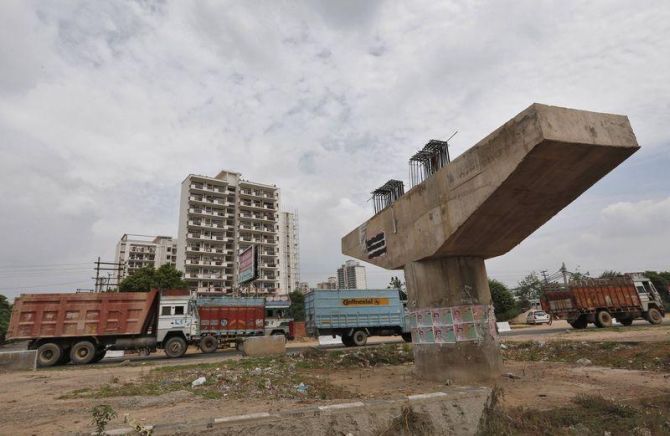 | « Back to article | Print this article |
India Inc’s investment project announcement falls to Rs 11.3 trillion. In the coming months, the pace of investments would depend on how soon consumption demand picks up and private sector investment ramps up investment in infrastructure.

The value of new investment projects announced by Indian companies fell to Rs 11.30 trillion in 2018-19 compared to Rs 21.04 trillion in 2014-15, according to the data collated by the Centre for Monitoring Indian Economy (CMIE).
In the coming months, the pace of investments would depend on how soon consumption demand picks up and private sector investment ramps up investment in infrastructure.
“The current fiscal may not see any major upward shift, given the fairly low GDP growth witnessed in first quarter of fiscal 2020 at 5 per cent,” rating firm CARE Ratings said in a statement.
In a study of 1,405 Indian companies, CARE said of the Rs 4.84 trillion investment made in 2018-19, only two firms accounted for 17.3 per cent of the total while the top 10 accounted for 53 per cent.
The top 50 companies took care of 84 per cent of capital formation.
The gross fixed capital formation rate is a measure of how much of GDP in a year has been accounted for by investment.
This number has been rising very gradually from 28.2 per cent in FY17 to 29.2 per cent in FY19.
But it declined for five successive years since FY12, when the rate was 34.3 per cent.
Fresh investments in the corporate sector are measured by changes in gross fixed assets (GFA) of companies.
The sum of GFA and capital work-in-progress captures the investment made in fixed assets while the incremental amount would be the new capital investment made in a year.
In 2018-19, incremental GFA was Rs 4.75 trillion in the 1,405 companies.
The distribution of this investment shows that almost 20 per cent of investment was made in the power sector - mainly in renewables.
This was followed by around 10 per cent each in iron and steel, refineries, and metals.
The top five sectors accounted for 58 per cent of investment made by the corporate sector.
Therefore, the rating firm said, there has been concentration in terms of the sectors which are investing while others are left behind.
While most of the investment was made in capital-intensive utilities or infrastructure, no fresh investment was made in the consumer goods sector.
The rating firm blamed surplus capacity for lack of investment.
Though the RBI data shows that capacity utilisation has improved in recent quarters, consumer demand has not picked up.
Hence, there was no incentive for companies to expand.
Also, problems in the financial sector involving non-banking financial companies affected the flow of funds to an extent to some of these sectors.
Photograph: Adnan Abidi/Reuters